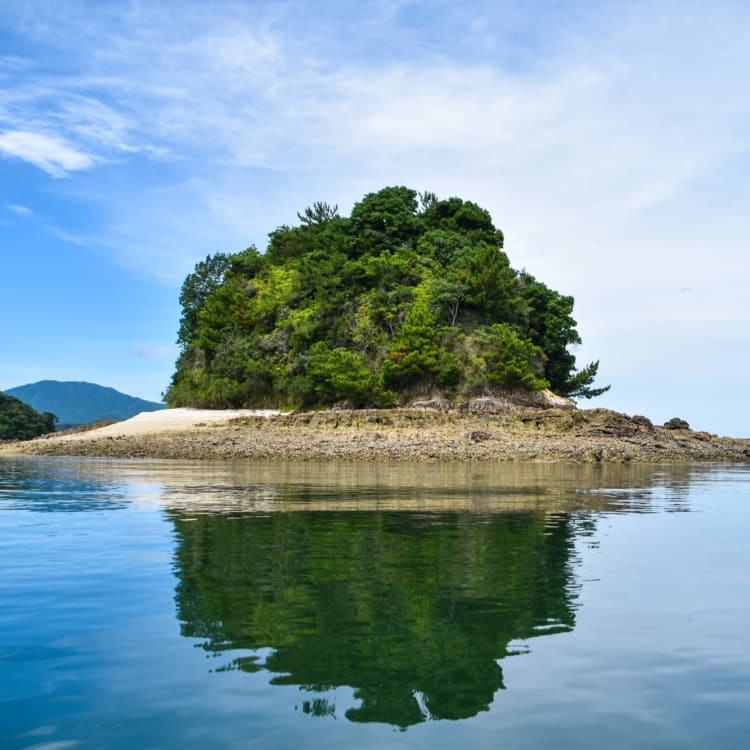
An Insider’s Guide to Unzen Amakusa National Park Uncover the natural wonders and diverse landscapes of one of Japan’s 34 national parks
When most travellers think about Japan, the first images that spring to mind are the historic temples and shrines of Kyoto and slick neon-lit streets of Tokyo. However, travellers might be surprised to learn that Japan is home to 34 national parks, each of which offering spectacular views and opportunities to get back to nature, hike, bike and more.
We spoke with Takahisa Horimatsu, a ranger at Unzen Amakusa National Park , which sprawls across Nagasaki, Kumamoto and Kagoshima prefectures on Japan’s southern island of Kyushu. Colloquially known as Unzen, it’s home to other-worldly volcanic landscapes, a rich and diverse ecosystem and, as you'll discover, plenty of incredible food. It’s an unspoiled gem and home to passionate locals and experiences travellers will never forget.

Mt Fugen
Can you tell us about your favourite part of your job as a ranger?
My office is located in the mountains and working in nature is a joy. It allows me to understand the issues that connect the environment and the local community, giving my work a sense of purpose and keeping me passionate and driven.
I have a background in planning, business and communication, so one of my key duties is to look after Unzen’s marketing and branding. If I’m not outdoors showing the park to visitors, I’m thinking about what I can do to help promote Unzen, researching and discovering new flora, fauna and geology and communicating with locals. I also get to invite media and influencers to come and explore Unzen, which I love. In terms of my job’s challenges, there aren't many stores where I live, so when I head into the city to shop, I have to try not to forget anything!
Why did you decide to become a park ranger/what’s your background?
Before this job I worked in Tokyo as the CEO of the Swiss outdoor brand Mammut. I hadn't spent a lot of time outdoors since my student days, but working with Mammut meant I was consistently in contact with the outdoor world. It inspired me to start mountain climbing and obtain qualifications as a guide.
After I retired from Mammut I was told by a director of the Japanese Guide Association who has a connection with the Ministry of the Environment that I might be able to work as a park ranger, if I was interested. I studied biology at school and I have a passion for promoting environmental awareness, so I thought it would be a great opportunity to combine all my interests and expertise for an important purpose. And now here I am!
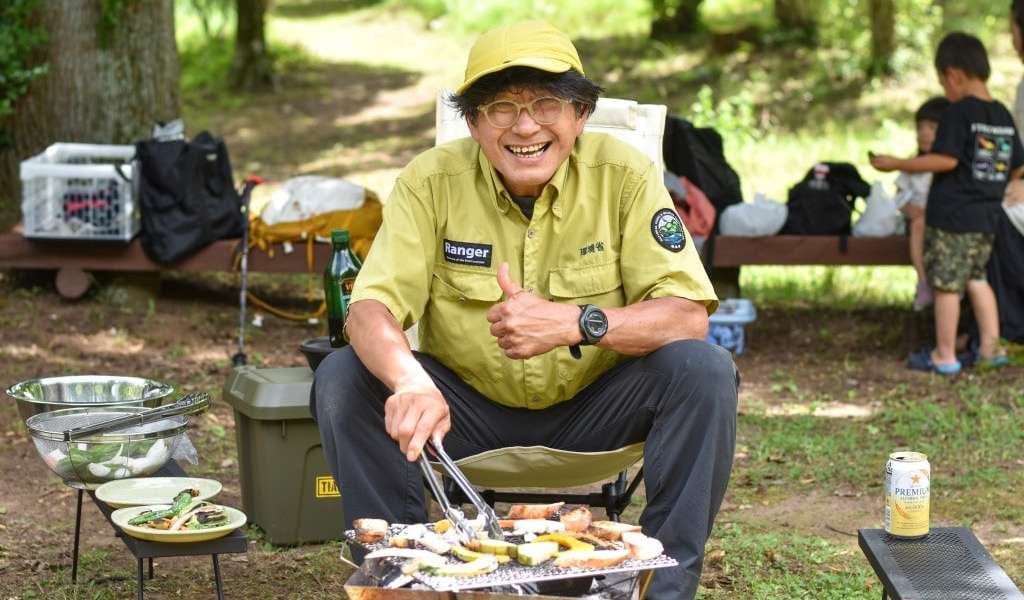
Takahisa Horimatsu barbecueing Unzen’s delicious vegetables
What’s something international travellers wouldn’t know about Japan’s national parks?
Some national parks in other countries are simply parks. But, in Japan, there are many national parks with townships and private residences within their perimeters. I think that's really inspiring because it means people are experiencing Japan’s beautiful nature in their daily life. And, for visitors, I think it’s interesting that they can experience firsthand how Japanese people live while enjoying the beauty of a national park. It's an authentic way to see Japan.
In addition, many international travellers would be surprised to know that Japan's national parks are home to an incredible variety of landscapes. The long north-south terrain of Japan means we have Shiretoko National Park in northern Hokkaido, where you’ll find drift ice in winter, and Okinawa's Kerama Shoto National Park down south, which has beautiful, colourful coral reefs.
Japan has an incredibly diverse climate. What are some of the best seasonal experiences you can have in Unzen Amakusa National Park?
Unzen is a place where you can experience Japan's four distinct seasons. Since the park is in a mountainous area with ranges reaching up to 1,400 metres, you can experience the weather and conditions that come with both low-altitude and alpine climates.
The hot spring area of the park remains relatively cool, making it a great summer getaway. Late spring (mid-May) to early summer (early June) is azalea season in the park and these flowers are stunning in full bloom. Winter is the best time for vegetable harvesting in Unzen, and you can eat a wide variety of delicious and unique vegetables at local restaurants and ryokan (Japanese-style inns) in the area.
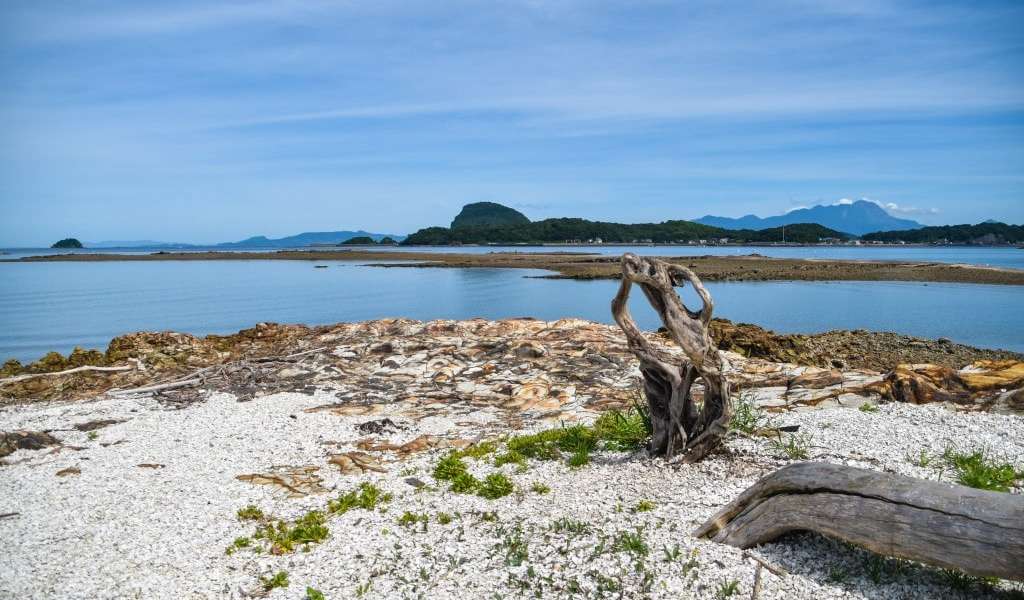
Amakusa Coast in Kumamoto
Is there a part of the park that only locals know about?
Here are some of my favourite areas visitors can enter:
- Oshidori Pond: the pond’s blue surface is framed by trees and sits against the backdrop of Unzen’s mountains. It’s beautiful. You can also watch the sunset over the pond, which is magical.
- Daikokuten on the banks of Oshidori Pond: here, you’ll find a handful of figures of Daikoku-sama (one of the 7 lucky gods) carved from rock. I don’t know who made them, but this spot was once used for Buddhist training, so my guess is that monks made them.
- The summit of Mt Yadake: not many people climb the track to Mt Yadake because it's quite steep, but the view from the top is incredible.
What do you think makes Unzen Amakusa National Park so special? What do you personally love about the park?
I love Heisei Shinzan. It’s an active volcanic group made up of several overlapping stratovolcanoes and it’s simply amazing.
I also really love Unzen’s jigoku (which translates to hells), which are natural hot springs. Get up close to one and you can feel the earth’s energy on your skin.
The food is another thing I love. Thanks to Unzen’s unique climate and proximity to the sea, you can enjoy a variety of vegetables and fish in the region’s restaurants and ryokan. I invite everyone to come and try the culinary culture of Unzen!
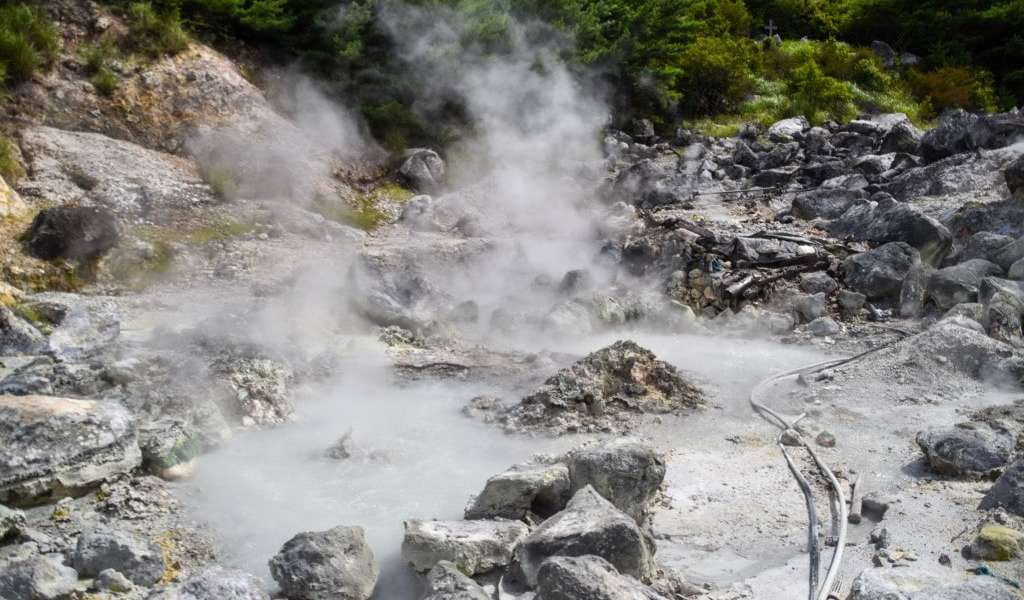
Unzen Jigoku
How many days do you recommend visitors spend exploring the area/what’s the best way to explore this national park?
Most people come for one night and two days. But I recommend three nights and four days. This way you can explore all that Unzen has to offer at your own pace, enjoying the local food, walking in the mountains, admiring the plants and relaxing.
In terms of when to come, I'd say the latter half of May is best. This is when the azaleas bloom. But the autumn leaves in October-November are beautiful too. The hot spring area is nice and cool in summer, offering a little respite from the humidity. Ultimately, when you come will depend on what you want to experience!
What type of wildlife can you see in Unzen Amakusa National Park?
Unzen is home to wild boars, badgers, martens, raccoon dogs (which are called tanuki), foxes, rabbits, moles, snakes and more than 100 species of birds.
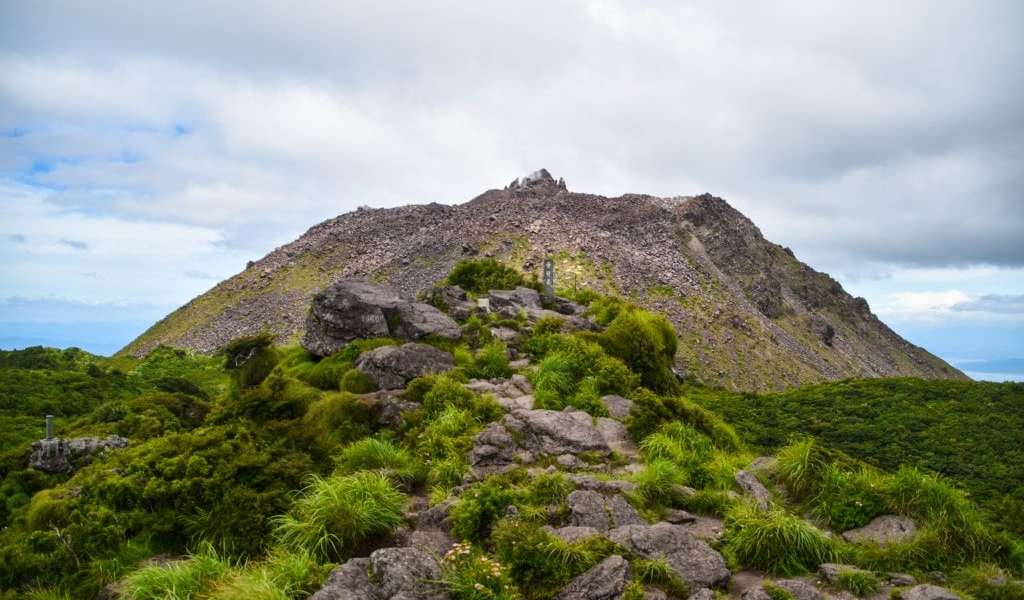
Views of the top of Mt Fugen
What viewpoints/photo spots would you recommend?
I’d recommend the Nita Pass Second Observatory - you can see Mt Heisei Shinzan and Mt Fugen from here. The hot springs (jigoku) in town are also a wonderful spot, as is Shirakumo Pond (home to a campsite and great for barbecues). The sunset from Mt Kinugasa is unforgettable and Oshidori Pond is so tranquil.
What are some other sights worth seeing/must-dos in the area?
I love telling visitors about Unzen’s culinary delights and I encourage anyone visiting to eat as much of the region’s fresh vegetables and fish as they can.
In addition, I’d recommend climbing Mt Fugen to enjoy the views from the top, taking a dip at one of Unzen’s many onsen facilities and joining the night jigoku tour.
We also host a range of unique events and experiences throughout the year, like zazen meditation, kotatsu ‘eco tatsu’ (heated low tables covered by a blanket and powered by geothermal energy rather than electricity) parties and post-hike tea-drinking ceremonies.
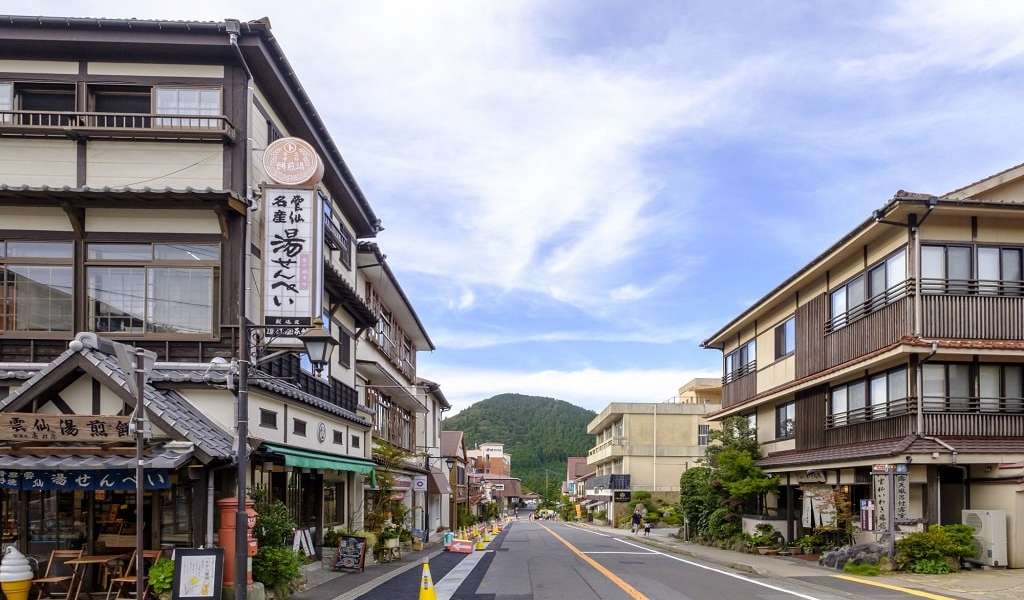
Unzen Onsen
How to Get There
There is little public transport available at Unzen Amakusa National Park, so it’s best to explore the region by car. The hot spring town of Unzen Onsen is about 1.5 hours by car from both Nagasaki Station and Nagasaki Airport. To go further to the Amakusa Islands, drive to Kuchinotsu Port and take the car ferry to Oniike Port on Shimoshima Island.



















































